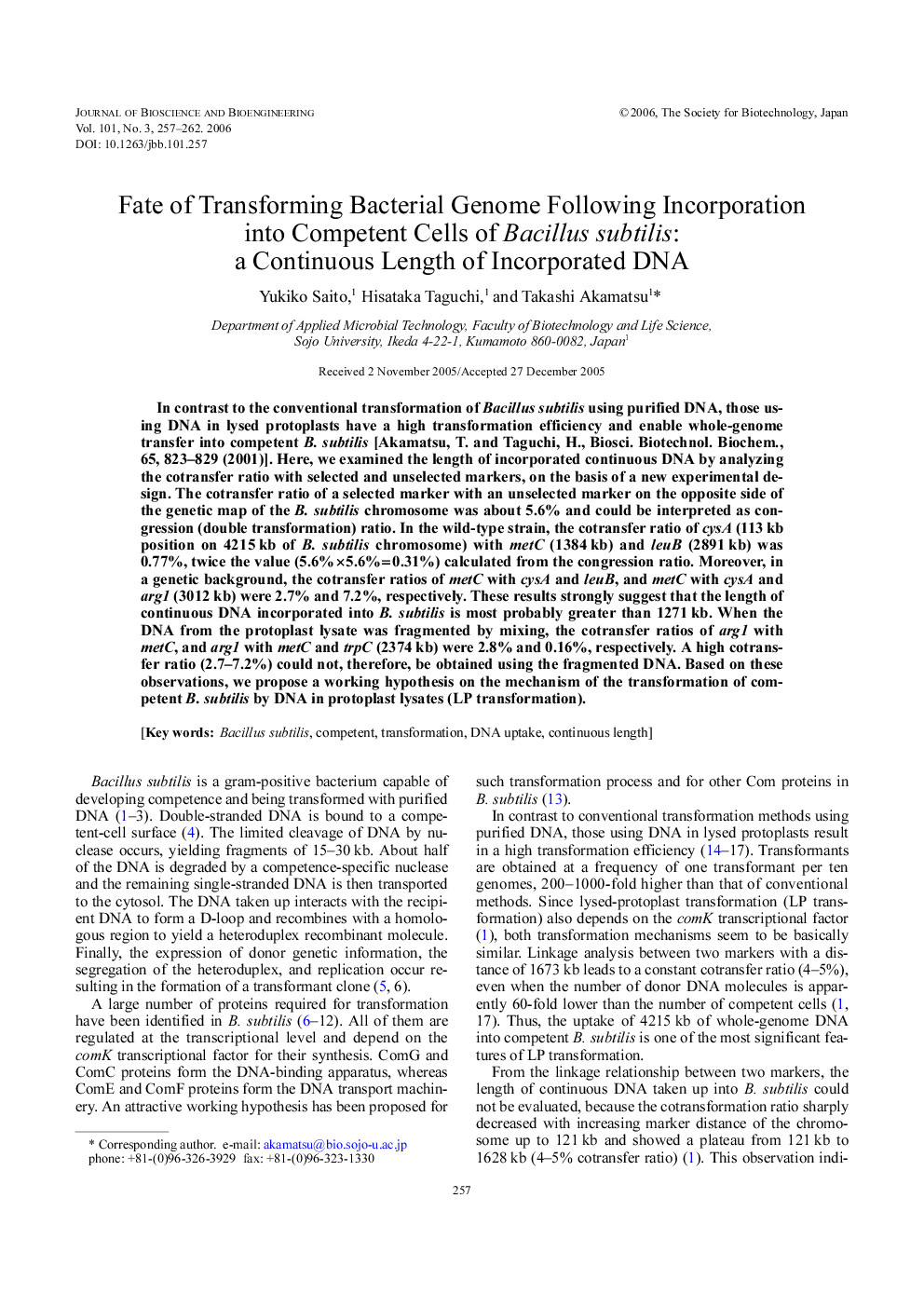| Article ID | Journal | Published Year | Pages | File Type |
|---|---|---|---|---|
| 22317 | Journal of Bioscience and Bioengineering | 2006 | 6 Pages |
In contrast to the conventional transformation of Bacillus subtilis using purified DNA, those using DNA in lysed protoplasts have a high transformation efficiency and enable whole-genome transfer into competent B. subtilis [Akamatsu, T. and Taguchi, H., Biosci. Biotechnol. Biochem., 65, 823–829 (2001)]. Here, we examined the length of incorporated continuous DNA by analyzing the cotransfer ratio with selected and unselected markers, on the basis of a new experimental design. The cotransfer ratio of a selected marker with an unselected marker on the opposite side of the genetic map of the B. subtilis chromosome was about 5.6% and could be interpreted as congression (double transformation) ratio. In the wild-type strain, the cotransfer ratio of cysA (113 kb position on 4215 kb of B. subtilis chromosome) with metC (1384 kb) and leuB (2891 kb) was 0.77%, twice the value (5.6%×5.6%=0.31%) calculated from the congression ratio. Moreover, in a genetic background, the cotransfer ratios of metC with cysA and leuB, and metC with cysA and arg1 (3012 kb) were 2.7% and 7.2%, respectively. These results strongly suggest that the length of continuous DNA incorporated into B. subtilis is most probably greater than 1271 kb. When the DNA from the protoplast lysate was fragmented by mixing, the cotransfer ratios of arg1 with metC, and arg1 with metC and trpC (2374 kb) were 2.8% and 0.16%, respectively. A high cotransfer ratio (2.7–7.2%) could not, therefore, be obtained using the fragmented DNA. Based on these observations, we propose a working hypothesis on the mechanism of the transformation of competent B. subtilis by DNA in protoplast lysates (LP transformation).
